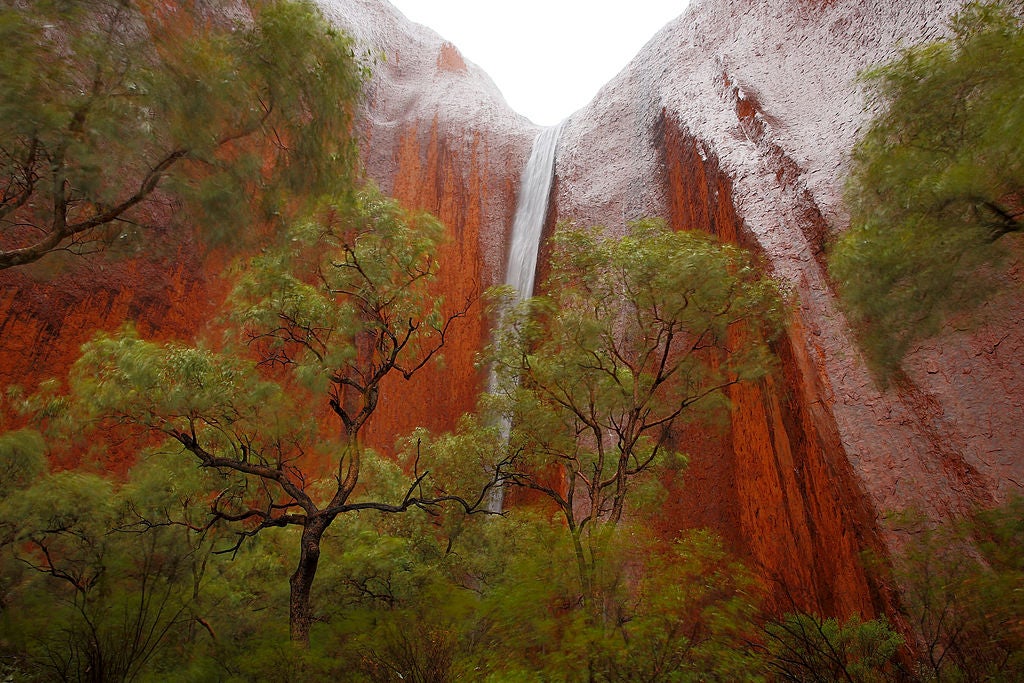Tourists spot rare phenomenon of Uluru waterfalls
The effect is created by heavy rainfall

Your support helps us to tell the story
From reproductive rights to climate change to Big Tech, The Independent is on the ground when the story is developing. Whether it's investigating the financials of Elon Musk's pro-Trump PAC or producing our latest documentary, 'The A Word', which shines a light on the American women fighting for reproductive rights, we know how important it is to parse out the facts from the messaging.
At such a critical moment in US history, we need reporters on the ground. Your donation allows us to keep sending journalists to speak to both sides of the story.
The Independent is trusted by Americans across the entire political spectrum. And unlike many other quality news outlets, we choose not to lock Americans out of our reporting and analysis with paywalls. We believe quality journalism should be available to everyone, paid for by those who can afford it.
Your support makes all the difference.Tourists visiting Australia’s Northern Territory this week have been lucky enough to catch a rare sighting of Uluru’s waterfalls.
The phenomenon occurs at the famed landmark only when there has been heavy rainfall.
Extreme downpours can lead to temporary waterfalls cascading down the sandstone monolith’s surface.
As the area is one of the driest in Australia, receiving only 300mm of rainfall on average each year, seeing the waterfalls is something most visitors never get to experience.
This week, some 30mm of rainfall graced the northernmost section of the Northern Territory, known as the Top End, in just 24 hours – the most rain some parts of the region have seen in three years.
Visitors shared pictures of the rare waterfalls on social media, with one Instagram user captioning her photo, “What a privilege.”
Commenters agreed with the sentiment, with one writing: “How blessed you are! Not many people see Uluru like this.”
It follows Australian officials asking Google to remove images of the summit of Uluru from its Maps feature, which allows users to simulate “walking” atop the rock, last month.
Parks Australia asked the search engine to take down the pictures, arguing they defy the ban on climbing Uluru, which was finally closed to the public in 2019 after decades of campaigning.
The rock’s original owners, the Anangu people, have been demanding Uluru be closed to hikers since 1985, as it is a site of sacred significance for indigenous Australians.
“Parks Australia...requested that the content be removed in accordance with the wishes of Anangu, Uluru’s traditional owners, and the national park’s guidelines,” a spokesperson told Reuters.
Since the request, Google says it has removed the photographs in question.
A Google spokesperson told the Australian Broadcasting Corporation (ABC): “As soon as Parks Australia raised their concerns about this user contribution, we removed the imagery.”

Join our commenting forum
Join thought-provoking conversations, follow other Independent readers and see their replies
Comments